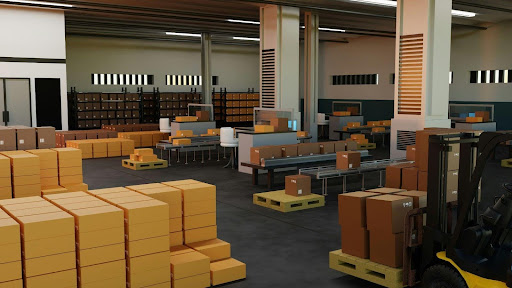As small businesses grow, storage challenges grow with them. Files, inventory, seasonal stock, equipment—sooner or later, every company faces the question of what to keep on-site and what to move elsewhere. Off-site storage is a flexible, cost-effective solution for many, and with platforms like WheeKeep, it’s easier than ever to find tailored options for your business. But using off-site storage isn’t as simple as moving boxes from Point A to Point B. There are hidden pitfalls that can cost time, money, and sometimes even damage your reputation.
Whether you’re already using a storage provider or considering the move, here are the top five mistakes small businesses make with off-site storage—and how to avoid them.
1. Failing to Track Inventory Accurately
One of the most common errors is losing track of what’s in storage, where it’s located, and when it needs to be rotated or retrieved. Out of sight often becomes out of mind—leading to duplicated purchases, expired goods, or missing equipment just when you need it.
What to do instead:
- Implement a digital inventory system (spreadsheet, app, or inventory management software).
- Assign clear labels, QR codes, or barcodes to every item and box.
- Record the date of storage, contents, and planned retrieval or review dates.
- Schedule periodic audits—don’t just rely on memory or handwritten notes.
Poor inventory management isn’t just inconvenient; it can directly impact cash flow, client satisfaction, and compliance if critical files or goods go missing.
2. Overlooking Security and Insurance
It’s easy to assume your storage provider will handle security and liability for your items. But not all facilities offer the same level of protection, and most require you to carry your own insurance for stored goods. A single break-in or accident could be disastrous if you haven’t done your homework.
What to check:
- What physical security measures are in place? (CCTV, access codes, alarm systems)
- Does the provider’s insurance cover loss or damage, or is it your responsibility?
- Have you updated your own business insurance to cover off-site assets?
- Is there a clear policy for reporting and investigating theft or loss?
For UK businesses, the government’s guide to business insurance explains what’s required and what’s wise. Don’t leave your assets vulnerable—understand the fine print before you sign up.
3. Choosing the Wrong Type or Size of Storage
Not all storage is created equal. Renting a unit that’s too large wastes money; too small leads to overcrowding, damage, and inefficient use of space. And if you pick a generic unit instead of a climate-controlled or specialist option, sensitive goods may be at risk.
How to avoid this trap:
- Take a complete inventory and measure items before renting space.
- Ask storage providers about flexible contracts—can you upsize or downsize as needs change?
- For temperature-sensitive equipment, electronics, or documents, opt for climate-controlled or specialist storage, even if it costs a bit more.
- Reassess your needs regularly—especially as seasons, inventory, or operations shift.
Businesses that plan ahead save money, protect their assets, and reduce headaches down the line.
4. Ignoring Accessibility and Logistics
Image from Unsplash
It’s tempting to choose the cheapest facility, but accessibility is crucial. Some businesses find themselves with storage units that are hard to reach, have limited hours, or are poorly located for quick retrieval. This can cause expensive delays—especially when urgent client needs arise.
Key questions to ask:
- What are the facility’s opening hours? Is 24/7 access available if needed?
- Can vehicles easily load and unload, or is there limited access for vans and trucks?
- Is the storage location close enough to your business or clients to avoid excessive travel costs?
- Does the provider offer delivery/pick-up services, as many modern solutions like WheeKeep do?
Prioritize convenience and speed—not just cost—when making your decision.
5. Neglecting Compliance and Sensitive Data
Businesses in fields like healthcare, finance, or law often store files off-site. But failing to follow data protection and privacy regulations when moving or storing sensitive information can result in fines, legal trouble, or loss of client trust.
To stay compliant:
- Know your sector’s requirements for data storage and destruction (e.g., GDPR, FCA, or other industry rules).
- Use secure, locked containers for sensitive files and maintain a chain of custody.
- Ensure only authorized staff can access storage units or retrieve files.
- Have a process for disposing of old records, such as shredding or certified data destruction.
A little diligence goes a long way in protecting your clients and your reputation.
Smart Storage Is Smart Business
Off-site storage can be a game-changer for small businesses—freeing up workspace, securing valuable assets, and allowing you to scale with confidence. But it’s not just about picking a storage company and handing over the keys. Avoiding these common mistakes ensures you get the full value of your investment, with minimal risk and maximum efficiency.
From inventory management and security to compliance and accessibility, the best storage strategy is proactive and detail-oriented. With modern solutions like WheeKeep offering flexible, professional support, there’s no reason your storage shouldn’t work for you—not against you.




